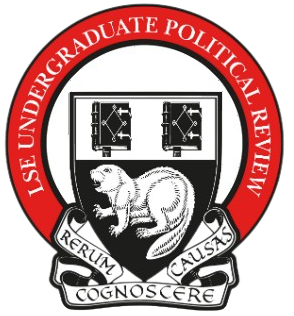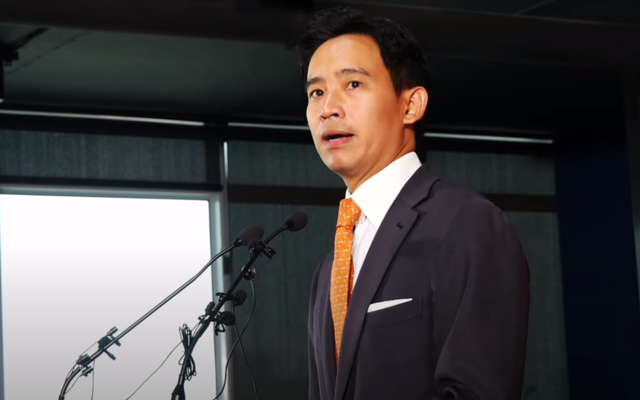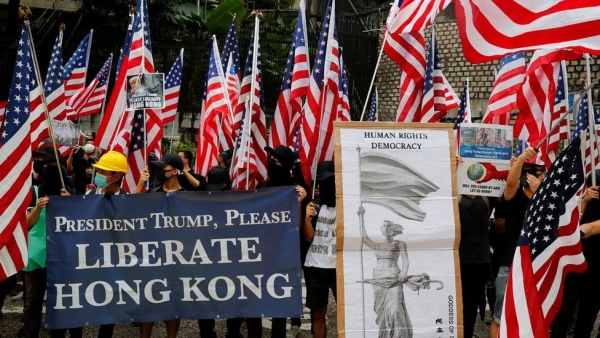The Myanmar Tatmadaw (military junta) plans to hold general elections in the second half of 2023, after gaining power in 2021 by initiating a coup d’etat. This article will reflect on the Junta’s regime and its rise encompassing the ‘who’s, ‘what’s and ‘why’s of the Myanmarese military occupation.
Why It Matters
The military occupation of Myanmar showcases yet another example of the breakdown of democracy globally. The rise of authoritarian regimes worldwide, from China to Poland, and their comfort in a ‘democratic nest’ may precede a future in which global freedom is threatened at an alarming pace.
Once A Democracy
Myanmar’s electoral system consists of the House of Nationalities and the House of Representatives. As per the constitution, there are 440 seats to be contested, of which 110 are allocated to military positions. In the general election of November 2020, the National League for Democracy (NLD) party won 258 of the remaining 330 seats, a decisive victory of 78.2%. The newly elected President was Win Myint, assisted by the Vice President, Myint Swe.
The Coup D’état
On the 1st of February 2021, Win Myint was forcibly removed from office, alongside NLD Chairperson Aung San Suu Kyi, both of whom were detained by the Myanmar Tatmadaw. The junta justified the coup with allegations of voter fraud in the 2020 elections, despite such claims having already been rejected by the Union Election Commission (UEC). Even though the NLD and the general public consensus concurred with the UEC’s decision, the Tatmadaw enforced martial law in Mandalay and Yangon, which decreed a public curfew. The Coup was led by then-Vice President Myint Swe, who assumed the role of Acting President. After announcing a state of emergency, Swe consigned authority to his Commander-in-Chief of Defence Services, Min Aung Hlaing.
Articles 417 & 418 of the Constitution – A Legitimate Move?
Questions of the legitimacy of military rule arose following the events of February 1st. The Tatmadaw spokesperson raised Articles 417 and 418 of the Myanmarese Constitution as the legal basis of the Tatmadaw’s actions. Article 417 dictates the authority of the President to declare a nationwide state of emergency. Subsequently, Article 418 allows for the consignation of the President’s jurisdiction to the Commander-in-Chief of Defence Services during the emergency. However, critics have noted the breach of Article 417, as Myint Swe called the state of emergency, despite not holding the position of the President. Myint Swe’s role as Acting President was also under scrutiny, as former President Win Myint’s claims of coercion circulated, accusing Swe of attempting to persuade Myint to resign. Thus, Myint Swe’s illegitimate role of Acting President may also undermine Article 418.
Motivations
The Tatmadaw Army General and State Administration Council Chairman Min Aung Hlaing has not yet explained his reasons for the military coup since the allegations of election fraud were rejected. However, two crucial elements could have played a part in the decision-making:
Military Power
The Tatmadaw’s leader, Min Aun Hlaing, would have retired just 5 months after the coup had taken place. Perhaps the military occupation of Myanmar not only provided the preservation of his power within the nation, but also greatly increased the weight of the military’s role in central Myanmarese politics. Moreover, the potential loss of Hlaing’s military position in retirement may have left him at risk of trials in international courts, due to his role as the Commander of the military in the Rohingya conflict, in which approximately 24,000 civilians were killed, with a further 116 000 others subject to military violence. Thus, the military rule may inhibit such accusations, out of fear of plunging Myanmar further into a political crisis.
Financial Power
As the leader of the Tatmadaw, Min Aun Hlaing also controls assets in the Myanmar Economic Corporation (MEC) and the Myanma Economic Holdings Limited (MEHL), both of which are multi-industry companies led and run by the Tatmadaw. Therefore, military rule in Myanmar may have allowed the junta to reform laws and regulations to favour their financial interests, increasing the wealth of the Tatmadaw’s elites.
Domestic Reaction
Civil Unrest
The general consensus among the Myanmarese public is disapproval of the military coup and solidarity with the NLD leaders and other government officials who have been detained. This led to protests and riots nationwide, including the ‘Pot-Banging Movement’, in which residents of Yangon began drumming on metal pots and pans, the cacophony a sign of opposition to the Tatmadaw regime. A significant amount of online resistance has also emerged, especially on Facebook, condemning the coup and providing a platform for political opponents to express their discontent. Labour strikes and boycotts of military-run operations and services have also taken place.
Ethnic Armed Organisations (EAO) and the People’s Defence Force (PDF)
The Karen National Union (KNU) is an EAO situated along the Eastern border of Myanmar, at the boundary of Thailand. Despite agreements of ceasefire in 2015, the KNU has continued to vouch for the region’s autonomy, and the 2021 military coup has only intensified its stance against the Tatmadaw. It was the first EAO to resist the Tatmadaw, by capturing base camps, providing asylum for anti-coup activists, and engaging in militarized conflict with the Tatmadaw. The Chin National Front (CNF), an EAO based in Western Myanmar, has also adopted an anti-coup position. It has participated in armed battles against the Tatmadaw in the state, attempting to abolish the ‘military dictatorship’ according to Dr Sui Khar, CNF Vice Chairman-3. The People’s Defence Force (PDF) is the armed sector of the National Unity Government, an outlawed administration that comprises the NLD and other ethnic parties. Similar to the EAOs, the PDF deploys its troops nationwide, using guerrilla warfare to reclaim territory run by the junta.
Tatmadaw Military Response
In 2022, in attempts to quash resistance to the regime, Myanmar has suffered around 20,000 fatalities, with the ACLED Conflict Severity Index rating Myanmar at ‘Extreme Severity’.
Public Censorship
In response to the online resistance, the Tatmadaw launched what the UN terms a ‘digital dictatorship’. It has restricted internet access for the citizens, by shutting down internet service providers, censoring media that oppose the regime, and proposing jail time for those who show online support of the Tatmadaw’s political opponents. It has also obstructed the use of the international banking system, which hinders anti-military activists from crowdfunding and donating to EAOs and PDFs.
Air Bombing Campaign
The Tatmadaw launched an air strike campaign on multiple villages in Myanmar which comprised the armed organisations resisting the military, including the KNU in Karen and the CNF in Chin. As a result, the KNU has accused the Tatmadaw of displacing over 12 000 civilians as a result of territorial destruction. Such campaigns have also caused food scarcity, and political and economic instability in affected regions.
The territorial destruction and armed conflict have impacted neighbouring countries to Myanmar as well. To its North, air strikes have heavily damaged the China-Myanmar trade route, with up to 11 casualties, including a Chinese citizen. Similarly, Westbound stray bombs have infiltrated India, prompting India’s foreign minister to express ‘concern’ over the growing intensity of the conflict just at its borders. Moreover, the absolute control that the junta exerts over Myanmar’s citizens removes incentives for accountability, creating an environment conducive to corrupt officials. Since the military coup, numerous reports of drug trafficking and arms dealing have surfaced in Thailand, supposedly linked to military officials.
International Action
Although a majority of Western Europe has publicly condemned the military takeover of Myanmar, Southeast Asia has taken a different response to the Myanmar Tatmadaw. Rather than denouncing the military rule, countries such as Bangladesh, Pakistan, and the Philippines have not directly interfered, instead choosing to encourage diplomatic discussions between the NLD and the Tatmadaw to hopefully restore peace and democracy in Myanmar. However, other Southeast Asian countries like Thailand, Vietnam and Cambodia are reluctant to interfere in Myanmarese politics and remain neutral in the matter. A meeting between ASEAN leaders in April 2021 revealed the ‘Five Point Consensus’, which calls for a ceasefire, and then aims to facilitate peace talks in Myanmar while providing ‘humanitarian assistance’ to the nation.
The USA has condemned the military coup, as well as imposed economic sanctions on Myanmar until the Tatmadaw renounces their rule. In January 2023, it levied sanctions on six military officials, the Ministry of Energy, the Myanma Oil and Gas Enterprise, and Burma’s Air Force. It has also frozen Burmese assets in the US amounting to $1 billion and proposed a global ban on arms dealing with Myanmar. New Zealand has suspended diplomatic ties with Myanmar, as well as imposing a travel ban on Myanmarese officials who have been complicit in the military occupation.
Remaining in Power
Despite numerous calls for the return of democracy in Myanmar, both domestically and internationally, the Tatmadaw remains in power. Some factors that have contributed to the Tatmadaw’s persistence:
IMF Aid
The International Monetary Fund (IMF) gave the Myanmarese government $356 million in financial aid to assist in tackling the COVID-19 crisis. However, the monetary support provided no written conditions that detailed the use of such funds. Thus, the lack of transparency on the part of the government may have encouraged the Tatmadaw to utilise IMF aid to fund their own interests and to assist in the occupation of Myanmar.
Strengthening US Relations
Under the supervision of the NLD, Chairperson Aung San Suu Kyi significantly improved Myanmar-China diplomatic ties. Under her supervision, President Xi Jinping of China made 33 agreements with Myanmar in 2020, marking the first visit of the Chinese President to Myanmar in 19 years. However, the Tatmadaw does not share the same optimism regarding the improved relationship, and seeks to further establish Myanmar’s alliance with the US instead. Thus, analysts have suggested that the US appeased the Tatmadaw because the military occupation may benefit the US – it gains an ally in Myanmar, while simultaneously pushing its antagonistic narrative of China. However, the US has since cracked down on the military junta, endangering the longevity of the Tatmadaw’s rule.
China and Russia as Suppliers
The Myanmar Tatmadaw sources its weapons mainly from China and Russia, amounting to $19 billion in 2019. This may explain both China and Russia utilising their veto powers in the UN Security Council to prevent the resolution to condemn the ‘humanitarian crisis’ in Myanmar from passing, delaying progress towards ending the military occupation.
Struggle to Maintain Power
Despite the aforementioned factors, the Tatmadaw has shown a struggle to quell resistance and maintain its rule over Myanmar. Firstly, Russia’s recent invasion of Ukraine has left little priority for the supply of arms to Myanmar, greatly reducing the resources available to the Tatmadaw. Next, the damage sustained by the Tatmadaw as a result of conflict with EAOs and PDFs has weakened the size of the army and its morale. Moreover, many members of the military have either resigned or defected to EAOs or PDFs, and conscripting national police officers has only increased the number. Thus far, The EAOs have been successful, with an estimated 40% to 50% of regions in Myanmar currently under the jurisdiction of EAOs.
The Future of Myanmar
Myanmar’s future is riddled with uncertainty. Although international organisations call for the return of democracy to Myanmar, and with it the NLD, some citizens suggest a complete restructuring of Myanmar’s electoral system. Citing 70 years of unresolved civil war, researcher Kyaw Hsan Hlaing disagrees with the Tatmadaw’s role in central politics, as well as the NLD’s defence of the Myanmarese military. Another possibility has been put forward by expert Michael Martin, who proposes that, because the Tatmadaw rule has intensified civil war, the eventual disassembly of the Myanmarese military by EAOs will occur, and with it the unified state of Myanmar as we know it.
Image source: Myanmar’s Coup: A Year Under Military Rule in Numbers from The Guardian





